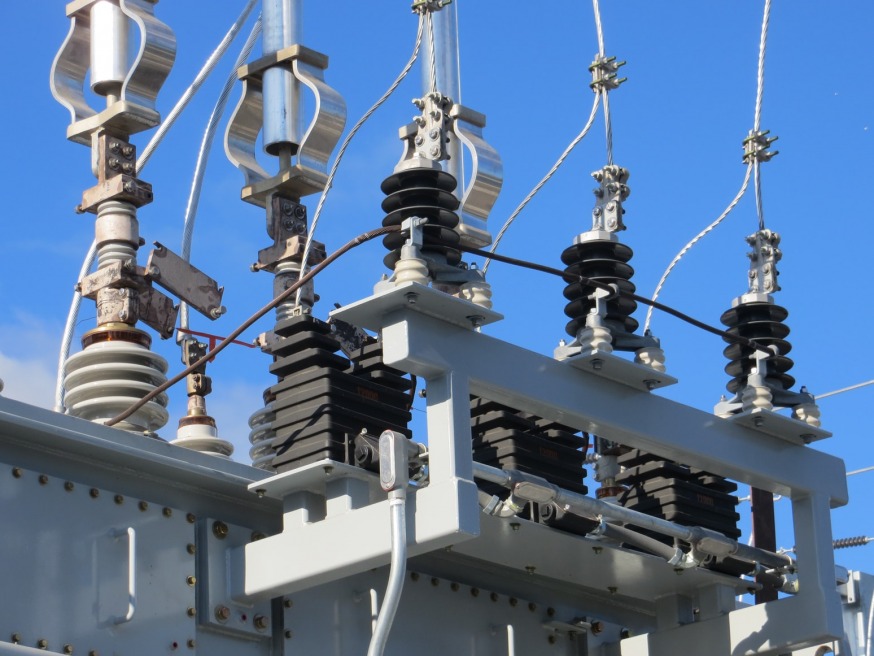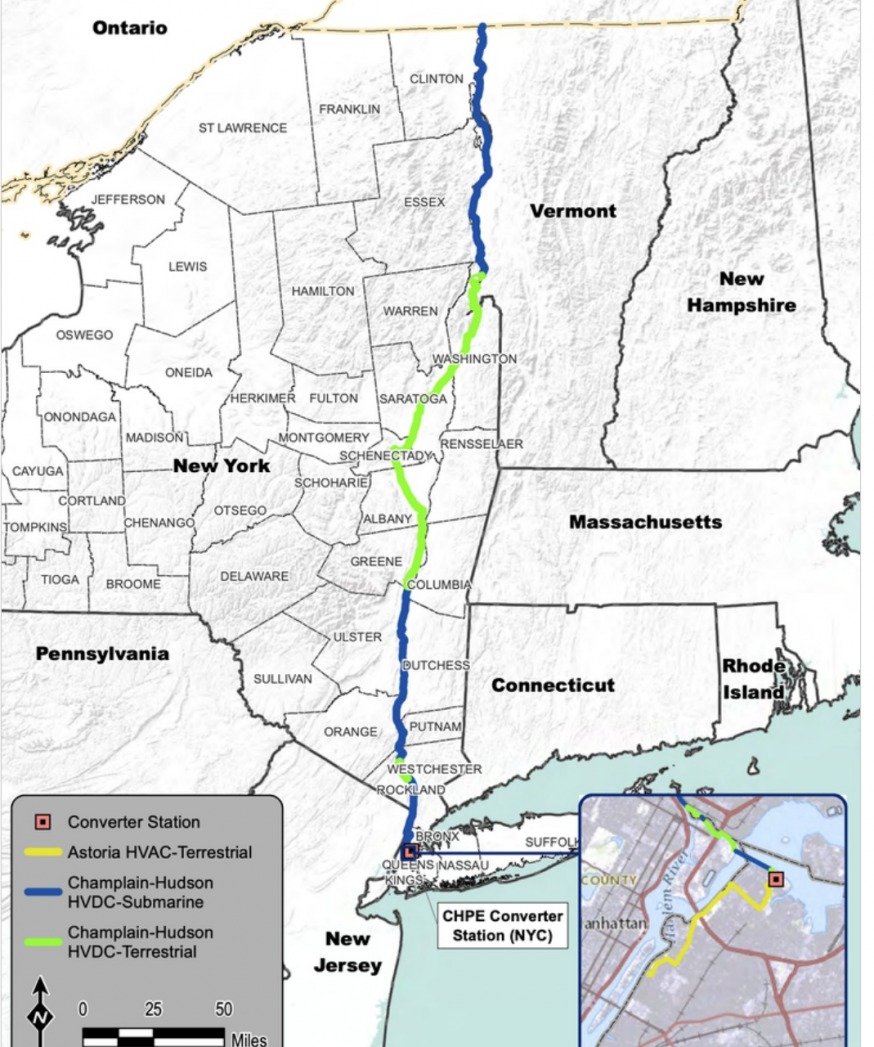
Photo: Unsplash
April 15, 2022 By Christian Murray
The state has approved two renewable energy projects that are expected to reduce the city’s dependence on fossil fuel burning plants in western Queens.
The NYS Public Service Commission—which oversees and regulates the electric, gas, water and telecommunication industries—approved two projects Thursday that will deliver clean energy from upstate New York and Canada to power stations in western Queens.
The first project is called Clean Path NY, which will transmit solar and wind energy from Central New York to the Rainey Substation in Long Island City, located on the corner of 36th Avenue and
Vernon Boulevard.
The second project is called the Champlain Hudson Power Express, which will send hydropower 339-miles along a transmission line from the U.S.-Canadian border to a new converter station near the Con Edison plants in northern Astoria. A cable will then link it to the Rainey Substation.

The Champlain Hudson Power Express route. (Hydro-Québec)
The two projects are expected to provide more than one third of New York City’s annual electric needs—and reduce the city’s reliance on fossil fuel-fired generation by more than 50 percent by 2030.
The approval of the projects represents a significant step toward the state’s goal of generating 70 percent of its electricity via clean energy by 2030 and a 100 percent by 2040, as required by the state’s Climate Leadership and Community Protection Act.
“New York continues to lead the nation with innovative green energy initiatives and has been an example to the rest of the world how to confront the perils of climate change, the existential threat of our time,” Gov. Kathy Hochul said Thursday when announcing the approvals. “Today’s decision is a major step forward in achieving New York State’s goal of 70 percentage of our energy from renewable resources.”
The two projects were selected by the governor last year from a list of seven submitted to the New York State Energy Research and Development Authority (NYSERDA), a state public-benefit corporation that focuses on energy efficiency. The proposals involved providing power for New York City via wind, solar and hydropower—which the state has been calling for.
However, despite the governor’s selection, they were not a done deal until the Public Service Commission signed off on them and that was not a certainty.
Lobbyists—primarily from the oil and gas industries—were working to oppose them. The Champlain Hudson Power Express drew significant criticism.
The Independent Power Producers of New York, a NYS trade group representing companies that supply power, urged the commission to reject the Champlain Hudson Power Express project—which it is said was too expensive, noting that the cost of building the new projects is subsidized by ratepayers.
“New York electricity consumers should not have to bear the staggering costs of two transmission projects,” said IPPNY President and CEO Gavin J. Donohue in a statement. “It is entirely possible that the 2040 zero emissions goal can be met at a lower cost with greater net benefits.”
The plans, however, had significant support from city officials and local advocates.
Former Council Member Costa Constantinides was a strong advocate for the two projects and held a press conference in February to put pressure on the PCE to approve them.
Constantinides told attendees at the press conference that the city needs to reduce its dependency on fossil fuels and noted that 55 percent of the power generated in New York City comes from Western Queens, with residents of the 11101, 11102 and 11106 bearing the brunt of the pollution.
He said that renewable power is not only cleaner but will reduce the volatility of electricity bills that are dependent on the gas markets.
Council Member James Gennaro, chair of the Environmental Protection Committee, also attended the press conference in support of the two projects.
“It is crucial that the state invest in renewals energy and shift away from harmful fuels—especially in western Queens, where the asthma rates are significantly higher than other parts of the city,” Gennaro said. “I vow to take charge in this fight for a greener, more sustainable New York City.”
Meanwhile, Bishop Mitchell Taylor, CEO of Urban Upbound in Long Island City, said at the press conference: “We implore NYS not to let the public housing residents here in Western Queens down. The cost to our community would be too great to measure.”
The Champlain Hudson Power Express is expected to begin delivering power to New York City by 2025 and the Clean Path NY project by 2027.
